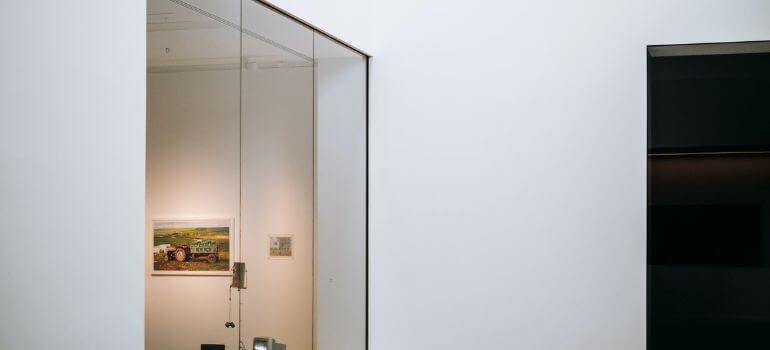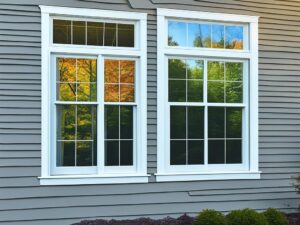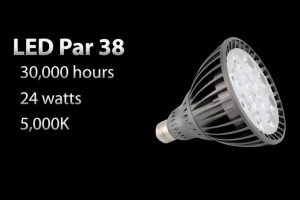When the time comes to enhance your home with window replacements, the debate often rests on full frame vs insert window replacement. Each method offers unique benefits and suits different renovation needs, which is why choosing the right window replacement is not just about aesthetics, but also about functionality and efficiency. Understanding the various window replacement types is crucial for homeowners who aim to make informed decisions that align with their home improvement goals.
Whether looking for a substantial upgrade or a simple refresh, window retrofitting can significantly impact your home’s energy consumption, resale value, and overall comfort. Navigating the complexities of window replacements can be overwhelming, but with this guide, you’ll be equipped to make the best choice for your home.
Key Takeaways
- Distinguishing full frame and insert window replacement is a starting point for modern home renovations.
- The choice of replacement impacts energy savings, property value, and the home’s visual appeal.
- Understanding the implications of each method can lead to more informed and satisfactory home improvement choices.
- Assessing the condition of existing window frames is crucial before deciding on the type of window retrofitting.
- Investing time in learning about window replacement types ensures a harmonized blend of style, efficiency, and function.
- Considering longevity and maintenance can aid in choosing the right window replacement for long-term satisfaction.
Understanding Window Replacement Options
Embarking on a home improvement project can be daunting, but understanding your window replacement options doesn’t have to be. With today’s advancements, homeowners have the opportunity to enhance their living spaces, improve energy efficiency, and increase their property’s value. We will delve into the distinctive features of full frame and insert window replacements to help you make an informed choice that aligns with both your aesthetic preferences and practical needs.
Overview of Full Frame Window Replacement
When it comes to full frame window installation, the process involves entirely removing the old window, along with its frame and sill, making way for a completely new unit. Homeowners often opt for full frame replacement when the existing window frame is damaged or when they desire a different window style. One of the main benefits of full frame window replacement is the opportunity to thoroughly inspect and repair any hidden issues such as water damage or insulation problems, ensuring a more secure and energy-efficient home.
Insights into Insert Window Replacement

The insert window replacement process is generally less intrusive and can be a more cost-effective choice. This method includes installing a new window sash and glazing within the existing frame. The advantages of insert window replacement are significant, particularly for those with frames that are in good condition and wish to retain the existing trim and siding intact. While insert replacements may offer less flexibility in terms of resizing or changing the window’s shape, they are a quick and efficient way to upgrade windows without a full-scale renovation.
Factors Influencing Replacement Window Choice
Selecting between full frame and insert window replacement hinges on several factors. The soundness of the current frames, the age of the home, budgetary considerations, and aesthetic vision all play pivotal roles in the decision-making process. To further elucidate these factors, let’s examine them in a comparative table:
| Factor | Full Frame Replacement | Insert Replacement |
|---|---|---|
| Condition of Existing Frame | Recommended when damage or deterioration is present | Feasible if the existing frame is in good condition |
| Budget | Tends to be a higher upfront investment | More budget-friendly, less labor-intensive |
| Installation Time | Generally requires more time due to extensive work | Quicker to install with minimal disruption to home |
| Aesthetic Changes | Allows for modification in size and style | Limited to the size and shape of existing frames |
| Long-term Energy Efficiency | Potentially higher due to opportunity for improved insulation | Depends on the efficiency of existing frames and installation quality |
When contemplating replacement window options, it’s essential to balance immediate priorities with long-term benefits. Whether you lean towards the transformative nature of a full frame window replacement or the subtler approach of an insert, careful consideration of these factors will steer you toward a decision that best fits your home’s unique requirements.
The Differences Between Full Frame vs Insert Window Replacement
Choosing between full frame window installation and the insert window replacement process is not just a matter of preference but also a decision that hinges on several factors related to your home’s needs. It is essential for homeowners to grasp the fundamental distinctions that can significantly influence the overall outcome and satisfaction with their window replacement project.
Full frame vs insert windows differ most notably in terms of the installation scope and relative impact on a home’s structure. Full frame replacement involves removing the entire window, including the frame and trim, allowing for a thorough inspection and possible repair of areas that are often hidden by the window frame, such as the rough opening and surrounding wall. This process can be particularly beneficial if there are signs of rot, water damage, or structural deterioration.
On the other hand, an insert window replacement refers to the procedure of installing a new window sash and glazing within the existing frame and sill. Perfect for scenarios where the existing window frame is still in good condition, this method is less intrusive and generally more cost-effective, as it requires less labor and material.
| Criteria | Full Frame Window Installation | Insert Window Replacement |
|---|---|---|
| Scope of Work | Extensive; replaces window, frame, & trim | Minimal; replaces the sash and glazing only |
| Condition of Existing Frame | Ideal when deterioration is present | Preferred if the existing frame is intact |
| Installation Time | Longer due to a more comprehensive process | Shorter, as it involves less alteration |
| Impact on Home | Can alter overall window opening and facade | Minimizes changes to exterior and interior |
| Cost Implications | Generally higher due to larger scope | More budget-friendly with fewer components |
Understanding these key differences will aid homeowners in recognizing which installation method aligns with the current state of their window frames, their renovation budget, and their long-term home improvement objectives. Both options have their place in the vast landscape of residential renovations—it ultimately comes down to the specific needs dictated by the assessment of your home’s condition.
Benefits of Full Frame Window Replacement
Embarking on a home renovation project presents various options, especially when it comes to windows. Among these, full frame window replacement stands out for a number of reasons. This option goes beyond mere aesthetics; it delves into the functional upgrades that benefit a home’s energy efficiency, structural integrity, and offers a wide range of design possibilities. We’ll explore these benefits in depth, illustrating why full frame window replacement is a worthy investment for homeowners seeking comprehensive upgrades.
Enhanced Energy Efficiency
One of the standout benefits of full frame window replacement is the enhanced energy efficiency it brings to a home. By opting for a full frame replacement, homeowners can anticipate significant improvements in insulation and air sealing. This not only lowers energy bills but also contributes to a more comfortable living environment, free from drafts and temperature fluctuations.
Improved Structural Integrity
Another crucial advantage is the improved structural integrity that comes with full frame window installations. Homes with older windows might suffer from damaged or deteriorated frames that can jeopardize the safety and stability of the structure. Full frame window replacement involves removing the existing frames and replacing them with new ones, thus ensuring that any underlying issues are addressed, fortifying the home against potential structural concerns.
Customizable Design Options
Home renovations are an opportunity for homeowners to reflect their personal style, and full frame window replacement offers customizable design options to achieve that. Unlike insert replacements that are confined to existing frame dimensions, full frame replacements open up a world of design flexibility. With full frame installation, it’s possible to change the shape, size, and style of windows, giving a home the facelift it deserves and potentially increasing its market value.
Advantages of Insert Window Replacement
Homeowners often face the decision of selecting the best window replacement solution that aligns with their needs and budget. Insert window replacement emerges as a popular choice owing to its unique benefits—combining cost efficiency with an uncomplicated retrofitting process. Let’s delve into the specifics that make insert window replacement an advantageous option for many.
Cost-Effectiveness of Insert Windows
One of the key advantages of insert window replacement lies in its cost-effectiveness. The process involves utilizing the existing frame, which significantly reduces material costs and labor. This option notably appeals to those pursuing home improvements without intending to overhaul their entire window structures. Insert window replacements offer the dual benefits of being both affordable and value-adding, which is a pivotal consideration for cost-savvy homeowners.
Minimal Disturbance to Existing Frame
The insert window replacement process respects the existing architecture of your home. By fitting a new window unit into the established frame, the window retrofitting causes minimal disturbance to the structure. Consequently, maintaining the integrity of a home’s historical character or exterior facade becomes a seamless, worry-free task. This attribute of insert replacement renders it an ideal choice, particularly for vintage homes where preservation is desirable.
Faster Installation Process
Time is of the essence in any home renovation project, and insert window replacement scores highly in this regard. With an expedited installation that can often be completed within a single day, it’s clear why many opt for this route. The faster process isn’t just convenient—it also translates into reduced labor costs and minimal disruption to daily household routines. Here’s a detailed breakdown showcasing the layer-by-layer time-saving aspects typical of an insert window retrofit:
| Insert Window Replacement Phases | Duration |
|---|---|
| Initial Assessment and Measurements | 1-2 Hours |
| Removal of Old Window Sash | 30-60 Minutes |
| Installation of New Insert Window | 2-3 Hours |
| Insulation and Sealing | 1-2 Hours |
| Final Touches and Clean-up | 1 Hour |
As evidenced by the rapidity and efficiency of the insert window replacement process, homeowners can relish the expedited return to their daily lives along with the instant enjoyment of their new windows.
Full Frame Window Installation Process
When it comes to upgrading your home with full frame window installation, understanding the process can alleviate any stress associated with this type of home renovation. Unlike insert window replacement, a full frame installation is a more comprehensive renovation that involves removing and replacing the entire window unit, including the frame. This offers an opportunity for a complete transformation and upgrade of your window space. Let’s break down the process:
- Initial Assessment: A thorough inspection is performed to evaluate the condition of the existing windows and frames, identifying the need for a full frame replacement.
- Selection of Window: Homeowners choose new windows that will fit their needs, based on aesthetics, functionality, and energy efficiency.
- Removal of Old Window: The existing window unit, including the frame and sash, is carefully removed to prepare for the new installation.
- Sill and Opening Preparation: Any damaged wood is replaced, and the opening is prepared to ensure it is level and waterproof.
- New Frame Installation: The new window frame is installed, ensuring a perfect fit within the prepared opening.
- Insulation and Sealing: Proper insulation is added around the frame, followed by sealing for enhanced energy efficiency.
- Finishing Touches: Interior and exterior trim is applied, along with any necessary painting or staining to match existing decor.
In considering window replacement types, homeowners should note that full frame replacement is often warranted if there is significant rot or deterioration, or if a size or style change is desired. On the other hand, full frame vs insert window replacement decisions can hinge on factors such as budget, current frame condition, and whether an upgrade in style or energy performance is sought.
| Step | Full Frame Window Installation | Insert Window Replacement |
|---|---|---|
| 1 | Complete removal of old windows and frame. | Existing frame remains, new window inserted. |
| 2 | New window selections offer broader design options. | Limited to size and shape of current opening. |
| 3 | Includes replacement of potentially damaged sill and frame. | Assumes current frame and sill are in good condition. |
| 4 | Longer installation time but results in a brand-new window unit. | Shorter installation, efficient if existing frames are sound. |
| 5 | Can address structural and insulation issues effectively. | Benefits may be limited by the condition of the existing frame. |
The full frame window installation is an extensive process, but with a significant return on investment in terms of window performance and home value. Whether you’re aiming for better insulation, a fresh look, or greater functionality, understanding the pros and cons of different window replacement types will guide you towards making the best decision for your home.
Insert Window Replacement Process
The insert window replacement process stands out as a preferred choice for many homeowners due to its streamlined methodology. Unlike the extensive full frame window replacement, the insert technique is less labor-intensive and can often be completed with minimal disruption to your home. A successful window retrofitting project hinges on meticulous attention to detail and precise execution, emphasizing the importance of a thorough understanding of the process.
- Evaluation of Existing Window Frames: Ensuring the integrity of the current frame to ascertain suitability for retrofitting.
- Accurate Measurement: Taking precise measurements of the existing window opening to guarantee a perfect fit.
- Selection of Insert Windows: Choosing the right style and type that complements your home’s aesthetic and energy efficiency goals.
- Removal of Old Window Sashes: Careful dismantling of the current window’s operating parts, like sashes and hardware.
- Insertion and Fitting of New Window: Installing the new insert window into the existing frame with precision.
- Securing and Sealing: Ensuring the new insert is securely fastened and well-sealed for optimal performance.
- Finishing Touches: Applying trim, caulk, and paint as necessary to finish the installation cleanly.
In the insert window replacement process, homeowners find a balance of convenience, cost-effectiveness, and enhancement of their property. Below is a snapshot comparison between insert replacement and full frame replacement to further inform your decision-making process.
| Consideration | Insert Window Replacement | Full Frame Window Replacement |
|---|---|---|
| Installation Complexity | Lower | Higher |
| Time Required for Installation | Less time-consuming | More time-consuming |
| Impact on Existing Structure | Minimal; uses existing frame | Extensive; replaces entire frame |
| Cost Implications | Generally more affordable | May involve additional costs |
| Customization Options | Limited to existing frame size | More flexibility in design and size |
| Typical Home Suitability | Homes with sound window frames | Homes requiring full renovation |
Understanding each step and factor in the insert window replacement process assists homeowners in navigating the path towards enhancing their homes with efficiency and style. Whether considering window retrofitting or weighing the options between full frame vs insert window replacement, knowledge is power in the journey of home improvement.
Conclusion
Embarking on a window replacement project is a significant decision that can dramatically influence your home’s energy efficiency, aesthetic, and overall value. After diving deep into the world of full frame vs insert window replacement, it’s evident that each option carries its unique benefits and considerations. Your personal needs, the architectural integrity of your property, and your willingness to invest will guide your choice, ensuring that your selection aligns perfectly with your home’s requirements.
Choosing the Right Window Replacement for Your Home
When it comes to choosing the right window replacement for your living space, it’s crucial to weigh the condition of your current windows against your future needs. Full frame replacements offer a fresh start, particularly for older homes where frames might be compromised, while insert replacements provide a swift and less intrusive upgrade. Reflect on aspects like longevity, performance, and the visual appeal that your new windows will contribute to your house’s character.
Long-Term Implications of Window Choice
The decision between full frame and insert options extends beyond immediate results. The long-term implications of window choice are considerable, affecting energy consumption, upkeep costs, and resale value. A well-informed choice can result in significant savings and a boost in property worth over time, not to mention the improved comfort and satisfaction you’ll experience in a well-sealed and beautifully windowed home.
Final Thoughts on Window Retrofitting
Last but not least, window retrofitting should be viewed as a strategic home enhancement rather than a mere necessity. With the knowledge gained about the different approaches to window replacement, you’re now equipped to navigate the market and make an investment that pays dividends in home happiness and fiscal prudence. Evaluate your needs, consult with experts, and take the next step toward revamping your living space with assurance and acumen.
FAQ
What is the main difference between full frame and insert window replacement?
The main difference lies in the extent of the replacement work. Full frame window replacement involves removing the entire window, including the frame and sill, to install a completely new window. Insert window replacement involves fitting a new window unit into the existing frame without disturbing the surrounding wall structure.
When should I choose full frame window replacement?
Full frame window replacement is ideal if your existing window frames are damaged or if you want to completely change the style or size of your windows. It allows for a more comprehensive update to your windows and can improve energy efficiency, structural integrity, and aesthetics.
What are the benefits of choosing insert window replacement?
Insert window replacement is typically more cost-effective, less disruptive to your home’s interior and exterior, and can be completed faster than full frame replacement. It’s a good option if your existing window frames are in decent condition and you wish to maintain the current window style and size.
How do I know which window replacement type is right for my home?
To determine the right window replacement type for your home, consider the condition of your current window frames, your budget, the desired aesthetic outcome, and your energy efficiency needs. An inspection by a professional can help you make an informed decision based on these factors.
Are there energy efficiency differences between full frame and insert window replacements?
Yes, full frame window replacements can offer enhanced energy efficiency because they generally allow for better insulation and sealing since the entire window unit and framework are replaced. However, with proper installation, insert windows can also significantly improve energy efficiency.
What is involved in the full frame window installation process?
The full frame window installation process includes removal of the old window and frame, preparation of the opening, installation of the new window with a new frame, insulation, sealing, and finishing touches including trim and paint as needed.
Can insert window replacement be done for any type of window?
Insert window replacement can be done for most types of windows, provided the existing frame is structurally sound and suitable to accept the new insert. However, it’s not recommended if there is extensive frame rot or damage.
Will full frame window replacement affect the look of my home?
Full frame window replacement can affect both the interior and exterior look of your home, as it often involves changes to the size, style, and trim of the windows. It offers an opportunity to update the appearance of your house.
How long does it take to install insert windows compared to full frame replacements?
Insert windows generally take less time to install than full frame replacements since they involve less labor and construction work. The timeframe can vary based on the number and type of windows, but insert replacements can often be completed in a single day.
Is it necessary to hire a professional for window replacement, or can it be a DIY project?
While some homeowners may have the skills to handle an insert window replacement as a DIY project, full frame replacements are more complex and generally require professional installation to ensure they are done correctly and safely, and to maintain warranty standards.



